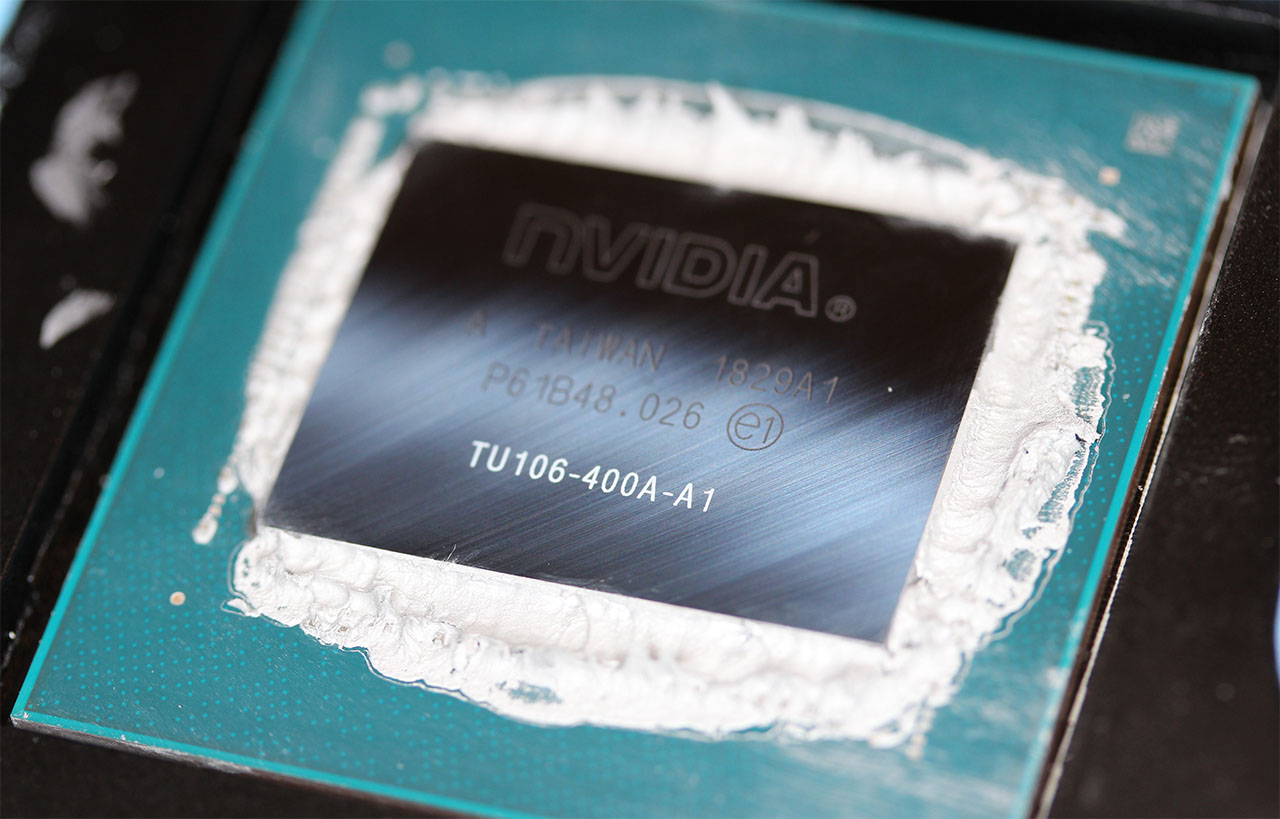Nvidia GeForce RTX 2070 Founders Edition Review: Replacing GeForce GTX 1080
Why you can trust Tom's Hardware
Conclusion
Nvidia’s GeForce RTX 2070 targets gamers with QHD displays looking to run their favorite titles at maximum quality. The GeForce GTX 1080 serves a similar market, as does AMD’s Radeon RX Vega 64. Both of those boards start at $500 (or a little lower).
According to Nvidia, GeForce RTX 2070 partner boards should be available at $500 as well. How likely is that to happen? Well, GeForce RTX 2080 was supposed to start at $700, and today most third-party cards come closer to $800. We were told GeForce RTX 2080 Ti would debut at $1000. But those are all listed for $1200 or more, and universally out of stock. Further, multiple partners were supposed to send GeForce RTX 2070 samples for today’s launch, and not one was able to deliver. Pardon our skepticism, but we’re drawing from the previous rocky launch, current pricing of month-old Turing-based cards, and the inability of Nvidia’s partners to ship their own designs ahead of claimed retail availability.
It’s true that GeForce RTX 2070 Founders Edition is faster than GeForce GTX 1080 across the 13 games and two resolutions we tested, sometimes by double-digit percentages. The TU106-based card also beats Radeon RX Vega 64 in most performance benchmarks. Although AMD’s flagship does bag a few wins across our suite, any attempt to compare power consumption or efficiency penalizes the Radeon significantly. At $500, then, the GeForce RTX 2070 does make sense as a replacement for GeForce GTX 1080, even if its value proposition is only slightly better.
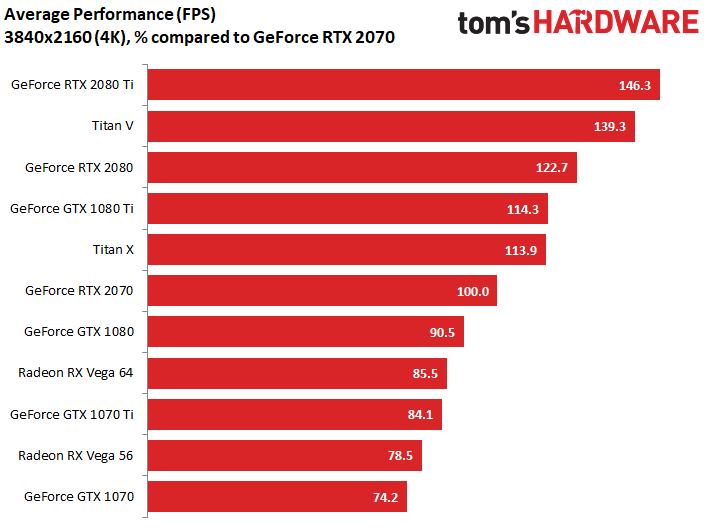
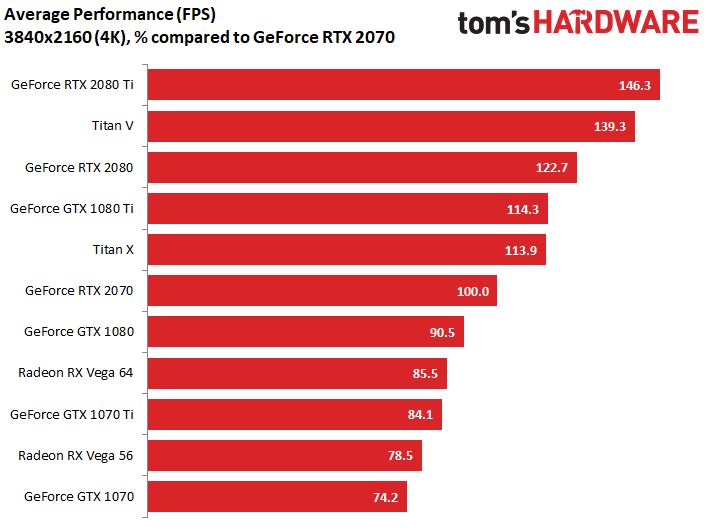
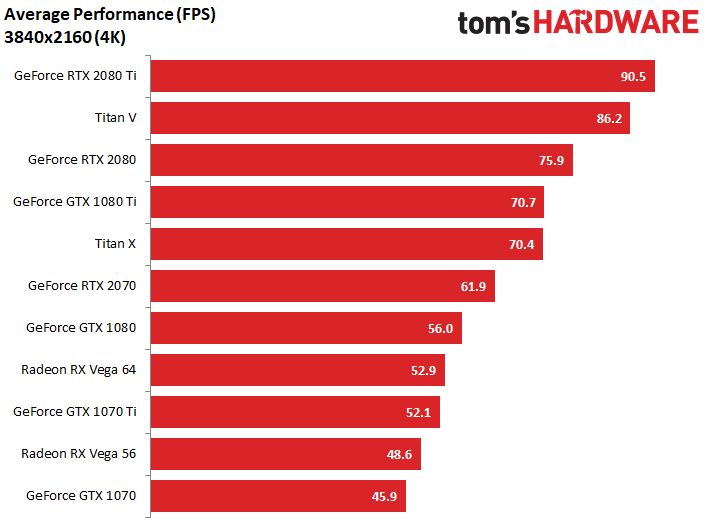
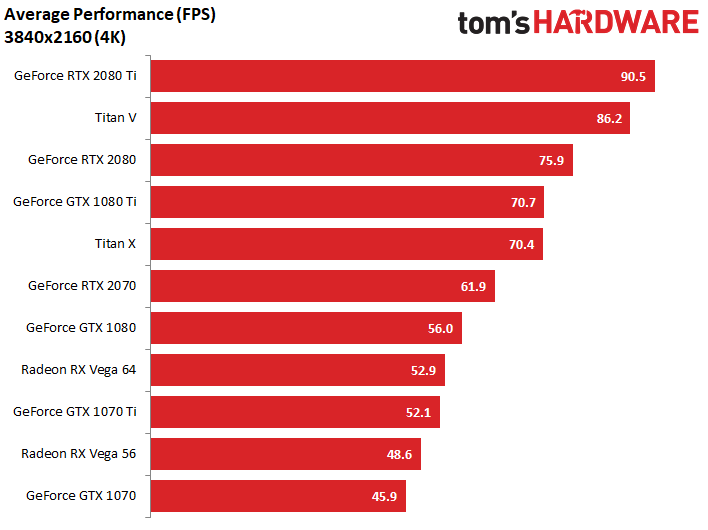
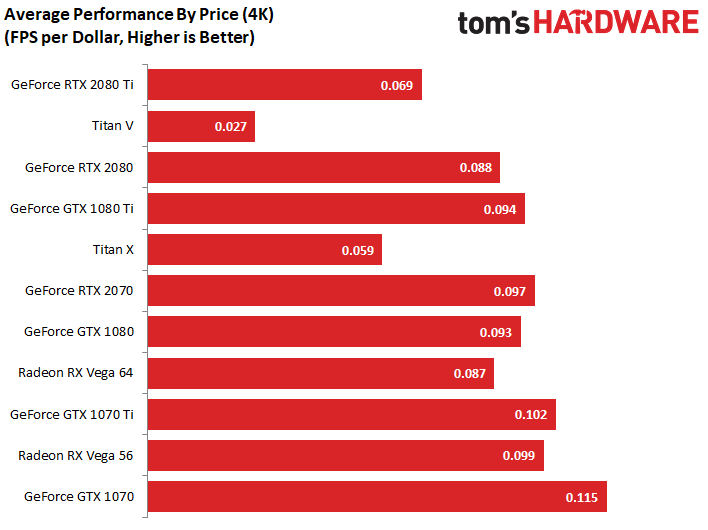
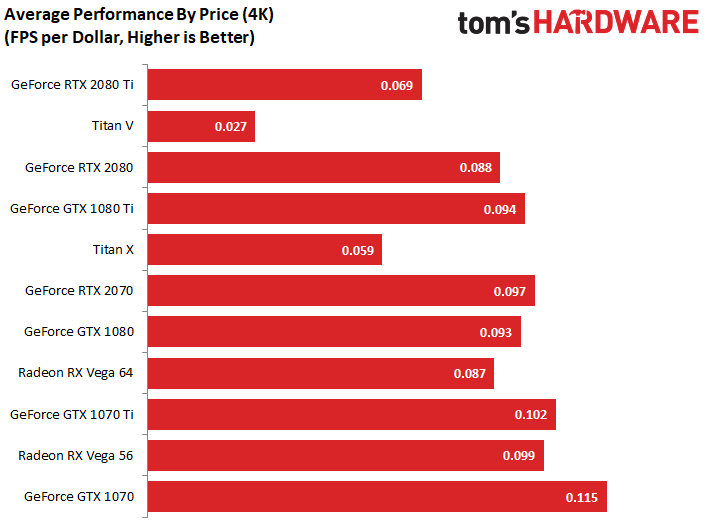
We’re not reviewing a $500 card, though. The GeForce RTX 2070 Founders Edition sells for $600, which is $100+ higher than the cheapest GTX 1080s and $50 more than Nvidia’s own GeForce GTX 1080 Founders Edition. It’s difficult to get excited about RTX 2070 at $600, unfortunately.
Turing introduces a lot of novel functionality primed to improve the realism of gaming in the weeks and months to come. So, what’s up with the lackluster reception of Turing-based graphics cards? It’s a three-part interplay of hyped-up technology that can’t be used yet, comparisons to plentiful Pascal-based cards, and a resulting (negative) perception of value. In generations past, Nvidia gave us more performance at a comparable, if not better price. This time around, the company is mostly competing against its own cards with MSRPs reflecting a lack of competition. GeForce RTX 2070 is basically a step sideways for anyone who was previously eyeballing GeForce GTX 1080. GeForce RTX 2080 is a step sideways for anyone with a GeForce GTX 1080 Ti. Only GeForce RTX 2080 Ti sets itself apart as an unrivaled winner among folks who were previously willing to pay $1200 for Titan-class frame rates. Buy Pascal or buy Turing; Nvidia wins either way.
And that’s why, so far, GeForce RTX 2000-series cards aren’t generating the same levels of enthusiasm with gamers as they are with game developers. Nvidia seems to be counting on the first round of ray tracing- and DLSS-enabled games to validate its architectural decisions. Based on our hands-on experiences with various demos, we have no doubt that anyone with a GeForce RTX 2080 Ti will enjoy their purchase. But it’s not clear yet whether RTX 2070 is fast enough to make Turing’s most newsworthy features usable. At this point, we’d hold off on a purchase unless you were already in the market for a GeForce GTX 1080/Radeon RX Vega 64-class card and can find GeForce RTX 2070 priced competitively.
It’s a foregone conclusion that we’ll have to revisit our opinions of all three GeForce RTX 2000-series cards once game developers start rolling out their Turing-optimized titles. Will ray tracing make enough of a difference to compel a graphics upgrade? Does GeForce RTX 2070 have enough RT cores to maintain playable performance in DXR-enabled games? Will broader availability force today’s inflated prices down? We sure hope so. Nvidia isn’t making any more Pascal GPUs, so the good deals on previous-gen cards are bound to run out sooner than later.
Get Tom's Hardware's best news and in-depth reviews, straight to your inbox.
MORE: Best Graphics Cards
MORE: Desktop GPU Performance Hierarchy Table
MORE: All Graphics Content
-
coolio0103 200$ more expensive a rtx 2070 than a gtx 1080 Strix or msi which is the same perfomance than the FE 2070. Bye bye 1080? Really? This page is dropped to the lowest part of the internet news pages. Bye bye Tom's hardwareReply -
80-watt Hamster Frustrating how, in two generations, Nvidia's *70-class offering has gone from $330 to $500 (est). Granted, we're talking more than double the performance, so it can be considered a good value from a strict perf/$ perpsective. But it also feels like NV is moving the goalposts for what "upper mid-range" means.Reply -
TCA_ChinChin gtx 1080 - 470$Reply
rtx 2070 - 600$
130$ increase for less than 10% fps improvement on average. Disappointing, especially with increased TDP, which means efficiency didn't really increase so even for mini ITX builds, the heat generated is gonna be pretty much the same for the same performance. -
cangelini Reply21406199 said:200$ more expensive a rtx 2070 than a gtx 1080 Strix or msi which is the same perfomance than the FE 2070. Bye bye 1080? Really? This page is dropped to the lowest part of the internet news pages. Bye bye Tom's hardware
This quite literally will replace 1080 once those cards are gone. The conclusion sums up what we think of 2070 FE's value, though. -
bloodroses Reply21406199 said:200$ more expensive a rtx 2070 than a gtx 1080 Strix or msi which is the same perfomance than the FE 2070. Bye bye 1080? Really? This page is dropped to the lowest part of the internet news pages. Bye bye Tom's hardware
Prices will come down on the RTX 2070's. GTX 1080's wont be available sooner or later. Tom's Hardware is correct on the assessment of the RTX 2070. Blame Nvidia for the price gouging on early adopters; and AMD for not having proper competition. -
demonhorde665 wow seriously sick of the elitism at tom's . seems every few years they push up what they deem "playable frame rates" . just 3 years ago they were saying 40 + was playable. 8 years ago they were saying 35+ and 12+ years ago they were saying 25+ was playable. now they are saying in this test that only 50 + is playable? . serilously read the article not just the frame scores , the author is saying at several points that the test fall below 50 fps "the playable frame rate". it's like they are just trying to get gamers to rush out and buy overpriced video cards. granted 25 fps is a bit eye soreish on today's lcd/led screens , but come on. 35 is definitely playable with little visual difference. 45+ is smooth as butterReply
yeah it would be awesome if we could get 60 fps on every game at 4k. it would be awesome just to hit 50 @ 4k, but ffs you don't have to try to sell the cards so hard. admit it gamers on a less-than-top-cost budget will still enjoy 4k gaming at 35 , 40 or 45 fps. hell it's not like the cards doing 40-50 fps are cheap them selves… gf 1070's still obliterate most consumer's pockets at $420-450 bucks a card. the fact is top end video card prices have gone nutso in the past year or two... 600 -800 dollars for just a video card is f---king insane and detrimental to the PC gaming industry as a whole. just 6 years ago you could build a decent mid tier gaming rig for 600-700 bucks , now that same rig (in performance terms) would run you 1000-1200 , because of this blatant price gouging by both AMD and nvidia (but definitely worse on nvidia's side). 5-10 years from now ever one will being saying that 120 fps is ideal and that any thing below 100 fps is unplayable. it's getting ridiculous. -
jeffunit With its fan shroud disconnected, GeForce RTX 2070’s heat sink stretches from one end of the card, past the 90cm-long PCB...Reply
That is pretty big, as 90cm is 35 inches, just one inch short of 3 feet.
I suspect it is a typo. -
tejayd Last line in the 3rd paragraph "If not, third-party GeForce RTX 2070s should start in the $500 range, making RTX 2080 a natural replacement for GeForce GTX 1080." Shouldn't that say "making RTX 2070 a natural replacement". Or am I misinterpreting "natural"?Reply -
Brian_R170 The 20-series have been a huge let-down . Yes, the 2070 is a little faster than the 1080 and the 2080 is a little faster than the 1080Ti, but they're both are more expensive and consume more power than the cards they supplant. Shifting the card names to a higher performance bar is just a marketing strategy.Reply
